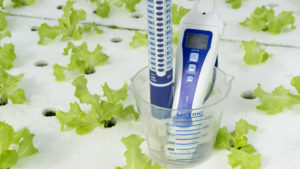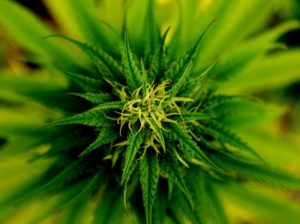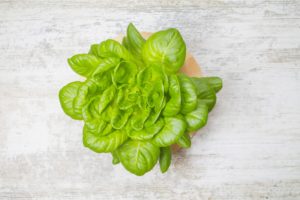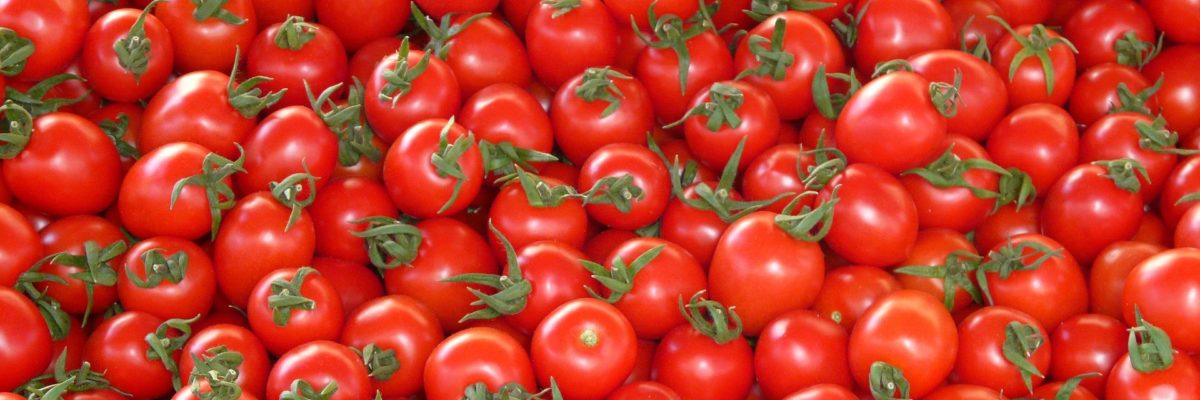
Want to grow hydroponic tomatoes? They are a great plant for hydroponics and can absolutely thrive with the optimal nutrients and conditions. Why not grow tomatoes so you can enjoy them year round? While tomatoes are known as a garden favorite, you may not want to try to grow hydroponic tomatoes if you have not grown in a water culture system. That said, if you already know a thing or two about hydroponic growing, tomatoes can be an ideal crop.
Hydroponic Tomatoes: An Overview
Before you start selecting seeds, here are the main things to know:
- Yield and time to harvest depend on variety
- Ideal EC: 2.0 to 3.5
- pH: 5.8 to 6.3
- Daytime temperature: 65 to 77 degrees Fahrenheit (18.3-25°C)
- Need high nitrogen, phosphorus, then potassium
- Best systems: NFT, Ebb and Flow, Drip, DWC
- Lighting needs change with maturity
- Available in bush and vining varieties
- May be susceptible to pests, fungi, or pathogens
Tomatoes, like any other fruiting plant, require more work. Unlike leafy greens, their needs change as the plant ages. The way tomatoes grow is different too. While all tomatoes are vining plants, bush and vining varieties grow differently. Bush varieties do not vine up so much as they vine down and out. As a result, they’re more manageable for home hydroponic systems. Vining varieties have a more upward growing habit. They are climbers, and often need supports (like a trellis) so plants grow properly.
Because all tomatoes vine, they are a favorite in vertical farming and gardening. If you have racks or a trellis, you can incorporate vertical growing into your hydroponic system. Of course, you will need to ensure you have enough height in your grow room too.
Hydroponic tomatoes grow well in most types of systems. They like a lot of water and need plenty of nutrients. Because of that, the best systems for them are NFT, ebb and flow (flood and drain), and DWC (deep water culture).
Recommended Equipment
How to Choose Which Type of Tomatoes to Grow
Decide whether you will grow a bush variety (also called ‘Determinate’) or a vining variety (also called ‘Indeterminate’). Unless you have vertical supports, and room for them, a vining tomato isn’t likely your first choice. Remember, time to maturity and harvest yield depend on the variety of tomato you choose.
Tomatoes can be susceptible to illness but choosing the right variety can help.
Different cultivars are bred to resist common illnesses, fungi, pests, and more. How can you tell which tomatoes are disease resistant? It’s all in their name. Or rather, it’s right after their name.
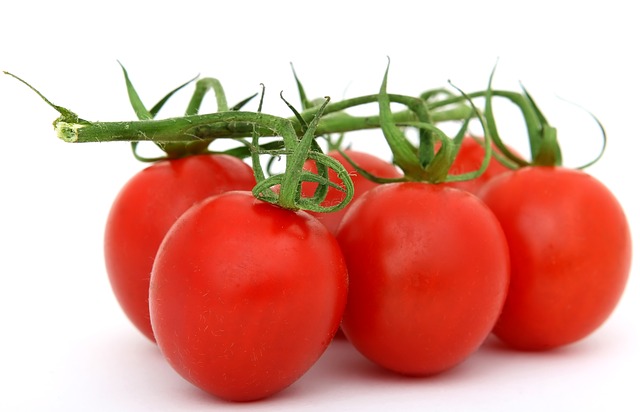
Disease & Pest Resistance Indicators
Tomato varieties bred for resistance are easy to find when you know where to look. Right after the name of certain tomato varieties, you might notice some capital letters. These initials actually show what resistance the tomato variety carries. They are often called ‘Disease Resistance Codes.’ For example, you might see a variety name that looks like this: California Sun VFN.
The International Seed Federation (ISF) creates guidelines for disease and pathogen resistance. The ISF also completes an annual review for updates.
Here are the most common illnesses for tomatoes, and the initials that show inbred resistance.
A (Anthracnose) –This fungus can harm the entire plant, although the fruits are usually the first to go. Leaves begin showing yellowish spots, often centered around lesions or holes.
A, Aal, AS, or ASC (Alternaria Stem Canker) – This fungus starts on the stems, creating little brown spots. Eventually, the spots encircle the stems and cause the plant to die.
AB, EB (Alternaria Blight, also called Early Blight) – Early blight is a fungus that often starts as small dark spots. The spots first show on lower leaves, and gradually move up the plant, causing leaf or fruit drop.
BS (Bacterial Speck) – This bacteria spreads easily and can even reach plants through wind or water. Brownish spots appear on the leaves and develop a yellow ring around them. Leaves eventually curl.
BW (Bacterial Wilt) – Bacterial Wilt first shows in wilting leaves, and later shows in wilting stems. Plants show stunted growth, and vines follow shortly after.
F, FF, FFF (Fusarium Wilt, Races/Fol: 1, 2, and 3) – Fusarium Wilt is a common fungus that begins damaging roots and continues moving up the plant. Stunted growth and wilting is common, and plants may not produce fruit. Eventually the entire plant dies, although lower leaves become yellow and brown first.
N (Nematode) – Nematode is actually a parasite, and it thrives in warm, wet conditions. Roots begin decaying, while leaves (and eventually the rest of the plant) wilt, become yellow, and cease growing.
PM (Powdery Mildew) – This fungus infects a wide range of plants, not just tomatoes. The first sign is a ‘powdery’ looking substance on leaves’ undersides. It typically appears in spots or patches. Over time, the upper sides of leaves develop yellowy-brown spots. Leaves decrease in size with prolonged infection.
T, TMV (Tobacco Mosaic Virus) – Tobacco Mosaic is a virus that does not quite kill plants, but rather inflicts serious damage. Eventually, yields decrease as plants stop growing. Leaves often show discolored spots, ranging from dark green to bright yellow green. The fruits (in this case, tomatoes) sometimes have brownish rings that visibly sink beneath the skin of the fruit.
V, Va, Vd (Verticillium Wilt, general or type VA-1 or VD-1) – This is one of the most common fungal infections in tomatoes. Leaves often drop after turning a yellow color and wilting. It can spread through water, wind, contaminated tools, or even through seeds from an infected plant.
Now that you know what the disease resistance codes look like, you can choose hardier tomato varieties.
Thinking back to our initial example, using California Sun VFN, we can tell what it resists. The resistance code is VFN. That means: V- Verticillium Wilt, F – Fusarium Wilt, and N – Nematode resistance.
Ready to Get Started?
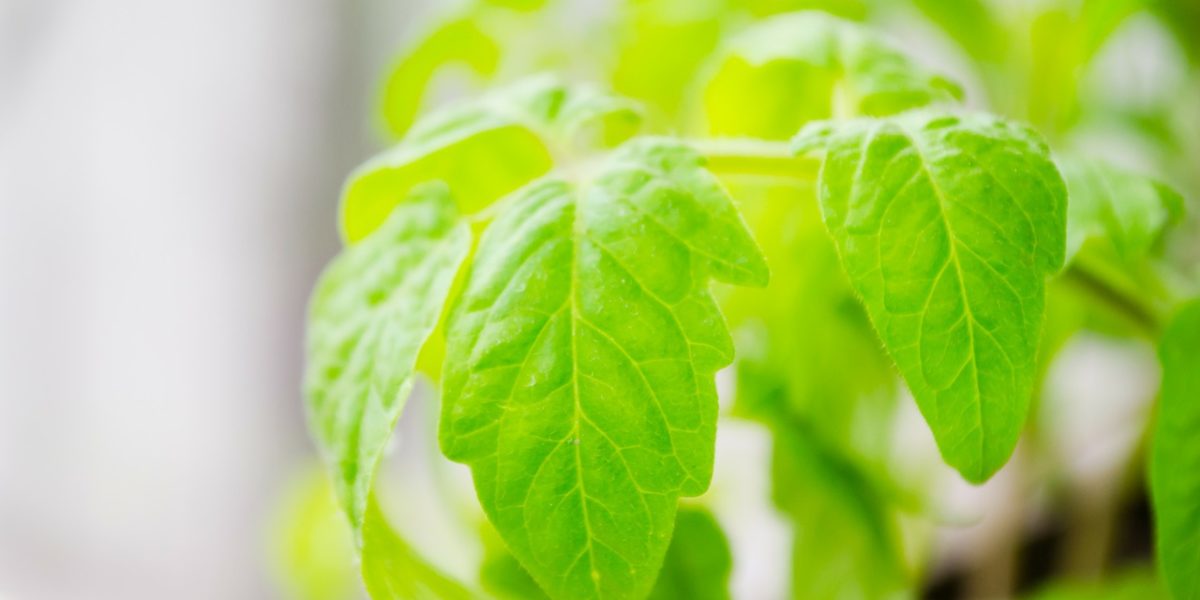
Assuming you’ve chosen the tomato variety you will grow, and gotten the seeds, it’s time to start growing. We’ll assume you’re starting with seeds, although using seedlings or clones can speed up the process. Most tomato seeds take 10-14 days to germinate. It’s best to use a growing medium like rockwool or coco coir to start tomato seeds. If you use coco coir, it is great paired with clay pebbles too.
You can learn more about growing medium here.
If you want to speed the process up more, you can always soak seeds before putting them in your growing medium. Just don’t leave them in too long. A day or two should be more than enough.
It’s a good rule of thumb to plant at least a few more seeds than you anticipate growing. That’s because some seeds may turn out weak plants, and some simply might not grow. You can always thin out your crops later.
Plants do not need any extra nutrients while you wait for germination. Everything they need is already in the seed pod. Just give them moisture, a warm temperature, and time. Nutrient solution comes later when you start growing tomatoes in your regular system.
Systems for Hydroponic Tomatoes
As we mentioned, tomatoes do well in most hydroponic systems. Hydroponics gives tomatoes plenty of water and nutrients, which they love. That said, there are some systems they do better in. Of course, pairing the best growing medium for hydroponics system is important too. While plenty of people prefer their own methods, there are some pretty foolproof combos you can use to get started.
Here are the best system/medium combinations to use to grow hydroponic tomatoes:
- NFT (Nutrient Film Technique) – Clay pebbles, perlite and vermiculite or coco coir (often paired as a mix with other media)
- DWC (Deep Water Culture) – Clay pebbles, mixed media
- Drip – Rockwool, clay pebbles, coco coir, perlite or vermiculite
Make sure you have the proper supports that allow tomatoes to cling to, and the support needed to hold ripening fruit.
Transplant sprouts
Once your seedlings develop a few ‘true leaves,’ you have the green light for transplanting. If you are using a starter tray with a lid (and we recommend you do), start giving your sprouts time without it on. Do this over a period of days before transplanting to help them adjust to the normal hydroponic system environment.
Be careful and avoid damaging your tomatoes’ young root systems. Give your tomatoes a few days to adjust before you start them on a regular nutrient solution.
Young/vegetative tomato care
Full spectrum light is ideal for tomato plants at any life stage. HID grow lights provide the intensity tomato plants need. But remember to switch from HPS (High Pressure Sodium) to MH (Metal Halide) when the plants mature. Having the right spectrum for your grow lights is important. Fluorescent light does not work well for tomato plants beyond the sprouting stage since they need more light. You can also use LED grow lights, and tailor the light for your plants’ growth stages.
Younger plants need light on the blue end of the spectrum.
But how much light should tomato plants get? Younger plants need no less than 8 to 10 hours of light every day. Before the plants mature, up to 12 or 14 hours is ideal.
Keep plants in a warmer environment, ideally between 65 and 77° F, or 18.3-25° C, during the day. At night, lower temperatures up to 12 degrees Fahrenheit. However, don’t let temperatures drop below 50 to 55 degrees (10-12.7° C).
Hydroponic tomatoes do well with a slightly acidic pH, usually between 5.8 and 6.3. The ideal pH varies depending on your chosen variety, but it stays consistent throughout the grow cycle.
Most tomato varieties do well with EC between 2.0 and 3.5, although some can have much higher target ranges. Because tomato plants produce fruit, they need a nutrient heavy diet. Make sure you test your nutrient solution often to avoid problems growing because of a nutrient deficiency.
Maturing tomato plant care
Some things stay consistent as tomato plants mature. For example, pH should always be somewhat acidic. Target EC remains fairly steady, although the plants need a greater ratio of other nutrients to fruit (i.e. phosphorus and potassium). Growing tomatoes in hydroponics is much easier when you use a digital meter to check.
One thing that does change is the photoperiod, or amount of light plants get throughout the day. As tomato plants mature, they thrive with up to 16 hours of light per day. Some varieties known for high yields even do well with up to 18 hours of light. Still, most varieties need at least 8 hours of darkness to respirate and properly fruit.
As the plants mature, they need light on the red end of the spectrum. A full spectrum light gives best results, but they still need red light to signal flowering and fruiting.
When growing outside, fruiting plants use the help of natural pollinators (bees, butterflies, etc.) to develop fruit. Most hydroponic systems are indoors. While that may eliminate some pest problems, it can also make pollination difficult.
How to pollinate tomatoes indoors
When you grow hydroponic tomatoes indoors, you don’t have those natural pollinators to get your growing plants ready to fruit. Some plants are self-fertile, or self-pollinating. Even so, most tomatoes are not, and even if they are, hand pollinating them gives you a better yield.
Once flowers appear and open, you can use a small, soft paint brush or cotton swab to disperse pollen. Paint brushes are ideal since they hold onto less pollen than a fibrous cotton swab. Lightly brush the bristles in the center of the plant and move up to the thin tubes in the center. Then, move onto the next plant.
You’ll repeat this brushing and transferring process for all the plants (of the same kind). Of course, the keyword for this process is gentle. You don’t want to damage your plants, especially when they’re about to fruit.
Some plants may even pollinate (in an indoor system) with some light shaking. This loosens pollen and disperses it to the other plants. Just make sure you lightly ‘shake’ all of your plants.
Whichever method you choose, a fan does wonders for pollinating plants indoors. It doesn’t need to be on the highest setting, a gentle breeze will do. If possible, use an oscillating fan. Not only does the motion transfer pollen more evenly, but it also keeps stems equally strong from plant to plant.
*See our detailed guide on hand pollination here.
Time to harvest!
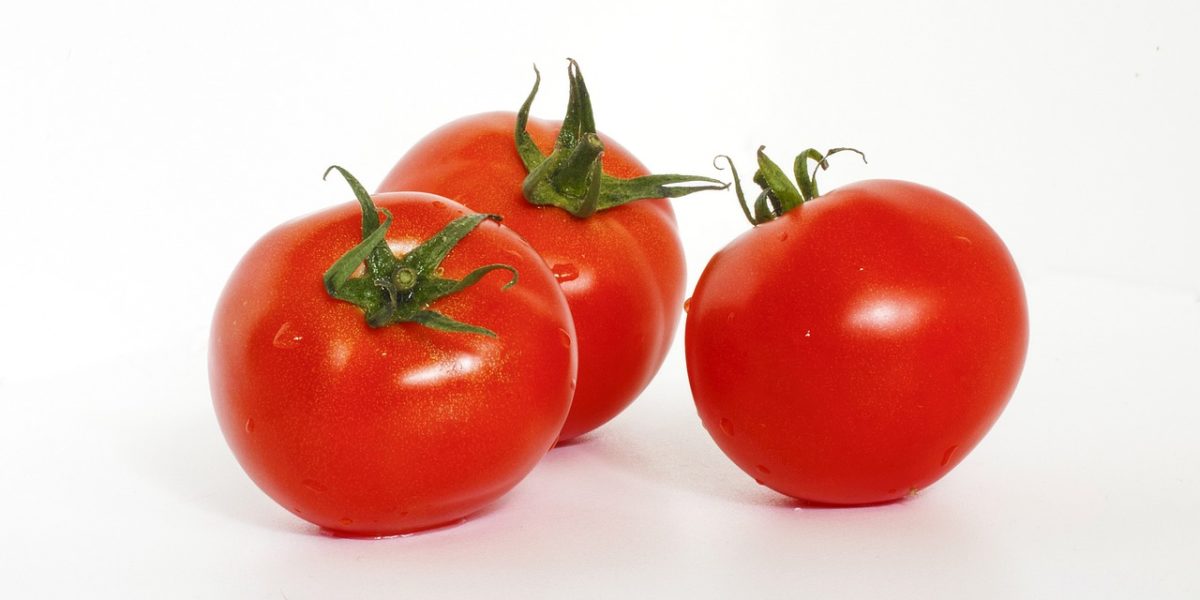
When tomatoes are ready to harvest depends on which variety you choose. Many types of tomatoes are ready within 50 to 100 days (or just under two months to a little over three months). You will see flowers gradually give way to small fruit, which grows larger and ripens with time.
Tomatoes don’t produce one huge harvest, all at once. Rather, they’re a fruit you harvest gradually, as each individual fruit ripens.
Frequently Asked Questions
What is vertical farming?
Vertical farming uses trellis structures, racks, or other vertical supports to grow plants. This helps them grow upward rather than outward. For indoor hydroponics, vertical growing is mainly used in commercial systems. Still, some hydroponics hobbyists find a vertical setup can be a space saver. Many gardeners use a form of vertical gardening for climbing plants, like ivy or morning glory.
Are hydroponic tomatoes good to eat?
When you grow hydroponic tomatoes, they’re every bit as safe to consume as any crop grown outdoors. Of course, that is why it’s also important to avoid using harmful chemicals and pesticides for fruiting plants. Not only are they safe to eat, they also pack in every bit as much flavor (and sometimes more), when grown with optimal nutrients. In terms of nutrient content, fruits can only give as much as they get. Hydroponic tomatoes can even pack in more nutrients than those grown with less favorable conditions. When you grow hydroponic tomatoes the right way, you lose nothing, but gain a lot of nutrients and flavor.
What are the best types of tomatoes to grow?
Depending on what you like, and what you’ll use them for, you may prefer different varieties. However, if you want a really solid bet and a strong crop, look for disease resistance codes, especially VFN. Disease resistance aside, cherry tomatoes are ideal for hydroponics. Heirloom varieties (like Brandywine) are a favorite for flavor. Beefsteak tomatoes, Daniella, Celebrity, and Big Boy are other popular choices.
